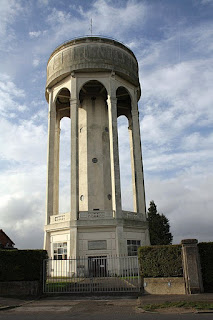The Water Tower in Cardiff Central Station
.jpg)
The Water Tower in Cardiff Central Station is a distinctive historical structure located next to the main railway station. It was built in the late 19th century and served as a water reservoir for steam trains. The tower is made of red brick with decorative yellow brickwork and features a high conical roof topped with a metal finial. The Water Tower in Cardiff Central Station / Colin Smith Although it is no longer used for its original purpose, the Water Tower still stands as an iconic landmark in the area. It serves as a reminder of the industrial heritage of the railway system in Cardiff and Wales. The tower is a Grade II listed building and is considered an important part of the city's architectural and historical heritage.While it is not accessible to the public, visitors can admire the Water Tower from the outside when visiting Cardiff Central Station. Its unique design and prominent location make it an interesting sight for both locals and tourists passing through...





